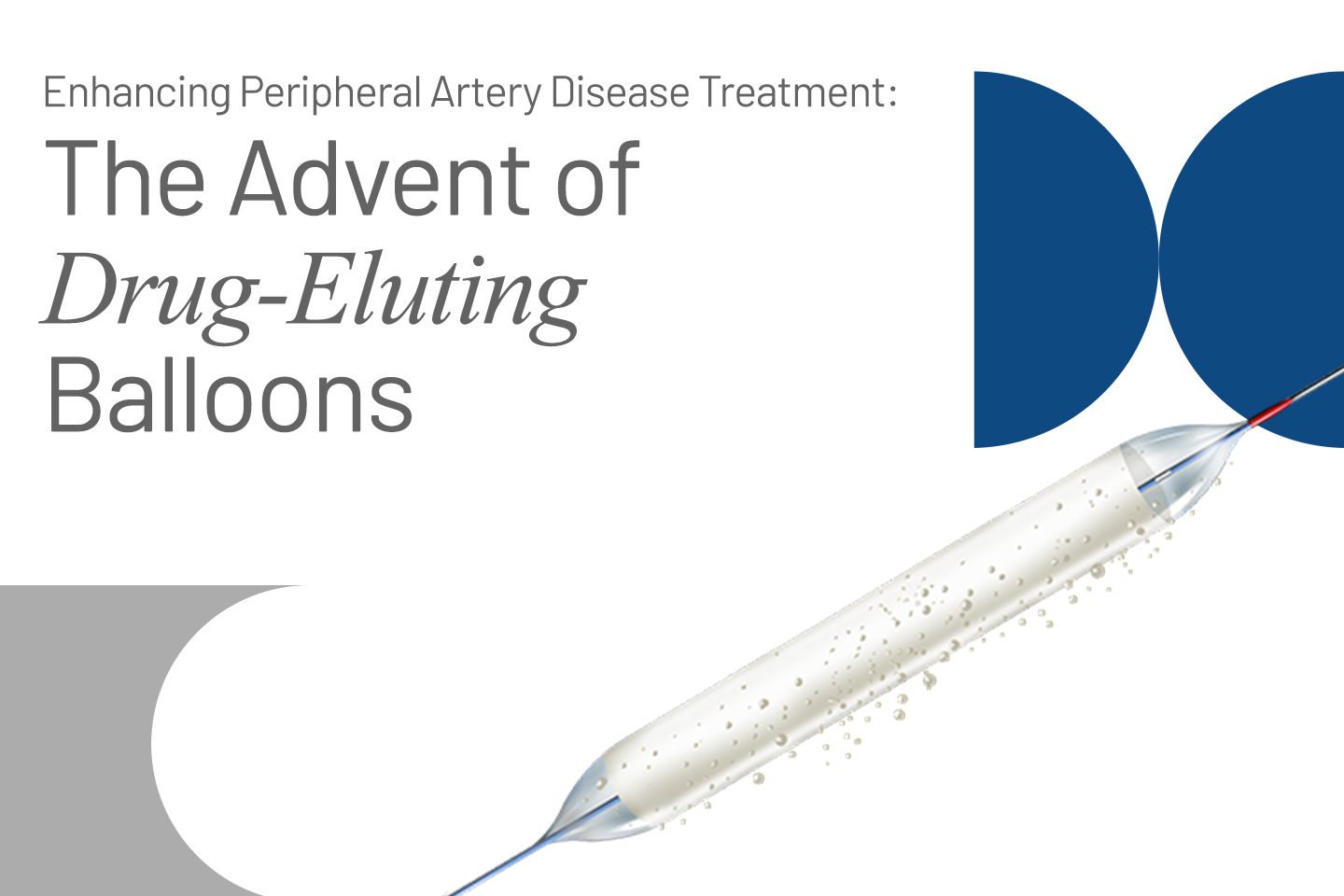Medical Devices
A Guide on the Connection Between Diabetes and Coronary Artery Disease

Have you ever wondered why having diabetes might put your heart at risk? It's a connection that's more common than you might think, yet many people are unaware of how these two health issues are linked. Understanding this relationship is not just fascinating but also crucial for maintaining your overall well-being. Learn how managing one condition can significantly impact the other and what you can do to keep both your blood sugar and your heart health in check.
Overview of Diabetes[1]
It is a chronic condition characterised by elevated blood sugar levels (glucose) due to the body's inability to produce or use insulin effectively. Insulin, which is a hormone produced by the pancreas, helps to regulate blood sugar levels. It facilitates the uptake of glucose into cells for energy production.
Causes of Diabetes[2]
Multiple factors contribute to the development of diabetes, including:
- Genetics: A person with a family history of diabetes is at an increased risk.
- Lifestyle factors: Obesity, poor diet, and lack of physical activity are significant contributors.
- Age and ethnicity: Older adults and certain ethnic groups are at higher risk.
Symptoms and Signs of Diabetes[2]
Common symptoms of diabetes include:
- Frequent urination
- Excessive thirst
- Unexplained weight loss
- Fatigue
- Blurred vision
- Slow-healing wounds
Complications of Unmanaged Diabetes[2]
If not managed properly, diabetes can lead to severe complications such as:
- Kidney damage (nephropathy)
- Nerve damage (neuropathy)
- Eye damage (retinopathy)
- Cardiovascular diseases, including coronary artery disease
Understanding Coronary Artery Disease (CAD)[3]
The primary cause of CAD is atherosclerosis, a process where plaque builds up inside the coronary arteries. Factors contributing to this condition include:
- High blood pressure
- High cholesterol levels
- Smoking
- Sedentary lifestyle
- Unhealthy diet
Symptoms and Signs of CAD[4]
CAD symptoms often include:
- Chest pain or discomfort (angina)
- Shortness of breath
- Fatigue
- Heart palpitations
- Nausea
Complications of Unmanaged CAD[3]
If left untreated, CAD can result in:
- Heart attacks
- Heart failure
- Arrhythmias (irregular heartbeats)
- Sudden cardiac death
How Diabetes Contributes to Coronary Artery Disease
Blood Vessel Damage[5]: High blood sugar levels in diabetics might damage the blood vessels' inner lining, making them more susceptible to atherosclerosis, the primary cause of coronary artery disease. Over time, this damage can lead to the buildup of fatty deposits (plaque), narrowing the arteries and restricting blood flow to the heart.
Role of Insulin Resistance in Promoting Atherosclerosis[6]: Insulin resistance can exacerbate atherosclerosis. When the body doesn't respond effectively to insulin, it results in higher blood sugar levels, contributing to the buildup of plaque in the arteries, i.e. atherosclerosis.
Impact of Diabetes on Cholesterol Levels[6]: Diabetes often leads to abnormal cholesterol levels, characterised by high LDL (bad cholesterol) and low HDL (good cholesterol). These imbalances increase the risk of plaque formation in the coronary arteries, furthering the progression of CAD.
Increased Risk of Inflammation and Clot Formation[7]: Diabetics have a higher propensity for inflammation and clot formation. Chronic inflammation can damage the arterial walls, while increased clotting can block the narrowed arteries, leading to heart attacks.
Common Risk Factors for Diabetes and CAD[2][8]
Several risk factors are common to both diabetes and coronary artery disease, including:
- Obesity: Excess body weight is a major risk factor for both conditions.
- Sedentary lifestyle: Lack of physical activity contributes to insulin resistance and heart disease.
- Unhealthy diet: Diets high in sugars, fats, and processed foods increase the risk of both diseases.
Importance of Managing Risk Factors of Diabetes and CAD[2][8]
Effectively managing these risk factors is important to reduce the chances of developing both diabetes and coronary artery disease. Following a healthier lifestyle can prevent or delay the onset of these conditions.
Genetic Predispositions [2][8]
Genetic factors also play a role in the development of both diseases. A family history of diabetes or heart disease increases an individual's risk, highlighting the importance of regular health check-ups and early intervention.
Symptoms Overlap and Misdiagnosis[2][8]
Similarities in Symptoms: Symptoms of diabetes and coronary artery disease can overlap, making diagnosis challenging. Both conditions can cause fatigue, chest pain, and shortness of breath, leading to potential misdiagnosis if not thoroughly evaluated.
Importance of Thorough Medical Evaluations: To avoid misdiagnosis, healthcare providers conduct comprehensive medical evaluations. This is done to consider the possibility of both conditions co-existing. Accurate diagnosis ensures appropriate treatment and management strategies.
Treatment and Management Strategies[2][8]
Diabetes Management
Effective diabetes management involves:
- Monitoring blood sugar levels: Regular monitoring helps keep blood sugar levels within the target range.
- Medications: Insulin therapy and oral medications may be prescribed to manage blood sugar levels.
- Lifestyle changes: Healthy, nutritious diet and regular exercise are vital components of diabetes management.
CAD Management[8]
Managing coronary artery disease involves:
- Medications: Various medications can help manage symptoms and reduce the risk of complications.
- Surgical interventions: Procedures like angioplasty or coronary artery bypass grafting (CABG) may be necessary in severe cases.
- Lifestyle changes: A heart-healthy diet, regular physical activity, and avoiding smoking are crucial.
Integrated Approach to Managing Diabetes and CAD
An integrated approach to managing diabetes and CAD involves coordinating care between healthcare providers. This ensures that both conditions are managed properly.
Lifestyle Modifications[2][4]
Heart-Healthy Diet
A heart-healthy diet is essential for managing both diabetes and coronary artery disease. This includes:
- Including plenty of fruits, vegetables, and whole grains in your diet
- Choosing lean protein sources
- Limiting saturated and trans fats
- Reducing salt and sugar intake
Role of Regular Physical Activity[2][4]
- Regular activity helps manage blood sugar levels in your body, maintain a healthy weight, and ultimately improve heart health. Aim for a minimum of 150 minutes of moderate-intensity exercise each week.
- In order to maintain a healthy weight, apart from regular acttivity, a balanced diet is equally important.
- Quit smoking and moderate your alcohol consumption to reduce the risk of both conditions. Smoking cessation improves heart health while limiting alcohol intake helps manage blood sugar levels.
Evermine50 by Meril
The Evermine50 by Meril is a drug-eluting stent designed for coronary angioplasty, featuring an ultra-low strut thickness of 50μm to promote early vascular healing. It uses everolimus with a biodegradable polymer for clinical safety and efficacy. The stent has a hybrid cell design with open cells in the center for better side branch access and closed cells at edges for scaffolding.
Final Thoughts
Understanding the connection between diabetes and coronary artery disease is important for effective management and prevention. Taking proactive steps today can lead you to a healthier future.
Reference Links:
[1] https://www.who.int/news-room/fact-sheets/detail/diabetes#:~:text=Overview,hormone%20that%20regulates%20blood%20glucose.
[2] https://my.clevelandclinic.org/health/diseases/7104-diabetes
[3] https://www.mayoclinic.org/diseases-conditions/coronary-artery-disease/symptoms-causes/syc-20350613#:~:text=Coronary%20artery%20disease%20is%20caused,burst%2C%20causing%20a%20blood%20clot.
[4] https://www.webmd.com/heart-disease/coronary-artery-disease#1-3
[5] https://www.diabetes.org.uk/guide-to-diabetes/complications/cardiovascular_disease
[6] https://www.escardio.org/Journals/E-Journal-of-Cardiology-Practice/Volume-22/diabetes-and-the-heart-coronary-artery-disease
[7] https://www.acc.org/Latest-in-Cardiology/Articles/2020/08/18/07/41/Management-of-Stable-Coronary-Artery-Disease-in-Patients-with-DM
[8] https://my.clevelandclinic.org/health/diseases/16898-coronary-artery-disease





